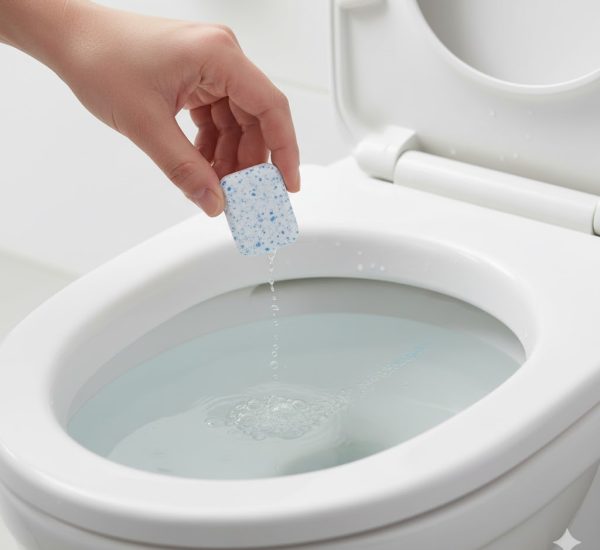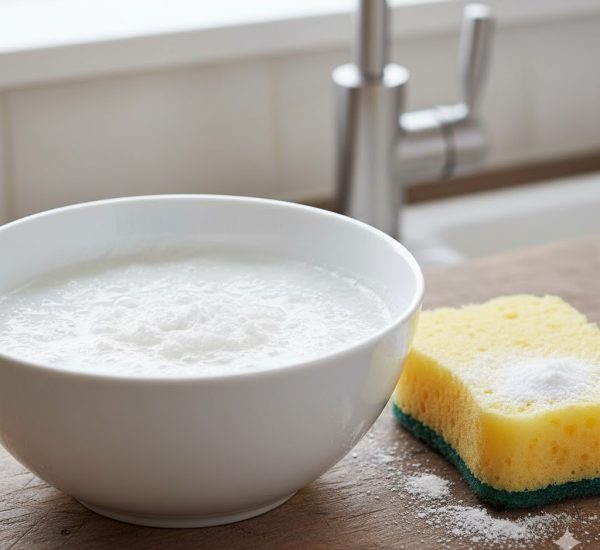Cleaning and polishing a kitchen sink can often feel like an uphill battle, especially when it has endured years of use and normal household detergents fail to restore its shine. Over time, sinks accumulate stubborn stains, mineral deposits, and grease that regular cleaning products cannot remove. While stores offer countless specialized cleaners, these products are often expensive and may contain harsh chemicals that can damage your sink or even pose health risks. Fortunately, there are simple, natural solutions using ingredients you likely already have in your kitchen that can make your sink look brand new.
Why Kitchen Sinks Get Stained
Sinks, whether made of stainless steel, ceramic, or composite materials, are constantly exposed to water, food particles, and cleaning chemicals. Over time, mineral deposits like lime scale, soap scum, and stubborn stains build up. These deposits not only dull the sink’s appearance but can also harbor bacteria if not cleaned thoroughly. Traditional cleaning products can remove some stains, but they often fail against ingrained dirt or require excessive scrubbing that may scratch the surface.
Natural Ingredients for a Spotless Sink
The key to restoring your sink’s shine lies in using natural, safe, and affordable ingredients. Among the most effective are:
-
White vinegar: A staple in kitchens worldwide, white vinegar is a natural disinfectant and descaler. Its acidity breaks down mineral deposits and leaves stainless steel surfaces gleaming.
-
Baking soda: Known for its gentle abrasiveness, baking soda works wonders in scrubbing away stains without scratching the sink’s surface.
-
Dish soap: Mild detergents help lift grease and dirt when combined with baking soda or vinegar, creating a powerful cleaning paste.
-
Hydrogen peroxide and cream of tartar: For sinks made of composite materials such as fragranite, these ingredients can effectively remove tough stains without causing damage.
Step-by-Step Guide to Cleaning and Polishing
-
Basic Cleaning and Vinegar Polish:
Start by rinsing your sink with warm water to remove loose debris. Use a regular sponge and mild dish soap to wash the entire surface. Once the sink is clean, apply white vinegar using a sponge or a cloth to polish the stainless steel. The vinegar removes water spots and leaves the surface gleaming in just a few seconds. -
For Stubborn Stains – Baking Soda and Vinegar:
If your sink has more persistent stains, sprinkle a generous amount of baking soda over the affected areas. Lightly scrub with a sponge, then pour white vinegar over the baking soda. This combination creates a fizzy reaction that loosens dirt and mineral deposits. Once the reaction subsides, rinse thoroughly with warm water. The sink will already appear noticeably brighter and cleaner. -
Creating a Cleaning Paste – Baking Soda and Dish Soap:
For sinks with heavy buildup, a thicker paste may be required. Mix baking soda with dish soap in a bowl until it forms a uniform, spreadable consistency. Apply this paste across the sink, paying extra attention to areas with stubborn stains. Let it sit for a few minutes to penetrate the dirt. Using a moderately rough sponge, scrub the surface gently to avoid scratching. Rinse thoroughly with plenty of water, then dry the sink with a soft cloth to reveal a spotless shine.
Cleaning Fragranite or Composite Sinks
For sinks made of fragranite or other composite materials, extra care is required. Avoid harsh abrasives that could damage the surface. A safe method involves leaving the cleaning paste (baking soda and dish soap) in place for no more than 4 hours, allowing it to dissolve mineral deposits effectively.
Alternatively, you can create a mixture using one part hydrogen peroxide and three parts cream of tartar. Spread the mixture over the entire sink and leave it until fully dry. This method effectively lifts stains and restores the sink’s natural luster without scratching or damaging the material.
Finishing Touch – Vinegar for Shine and Freshness
Once your sink is clean, give it a final polish using a cloth dampened with white vinegar. This step not only enhances the shine but also leaves the sink smelling fresh and clean. The mild acidity of the vinegar continues to inhibit bacterial growth and mineral buildup.
Benefits of Using Natural Ingredients
Using these simple, everyday ingredients offers several advantages:
-
Cost-effective: Ingredients like baking soda, vinegar, and dish soap are inexpensive and readily available.
-
Safe for your health: Unlike chemical cleaners, natural ingredients do not release harmful fumes or cause skin irritation.
-
Environmentally friendly: Natural products are biodegradable and do not pollute water systems like chemical cleaners can.
-
Effective: When used correctly, these ingredients can tackle tough stains, limescale, and grease without damaging sink surfaces.
Tips for Maintaining a Spotless Sink
-
Regularly rinse and wipe your sink after each use to prevent buildup.
-
Apply a light coat of vinegar once or twice a week for ongoing polish and descaling.
-
Avoid abrasive scrubbers on delicate materials to prevent scratches.
-
For composite sinks, use hydrogen peroxide and cream of tartar sparingly to maintain their finish.
Conclusion
Keeping your kitchen sink clean and shiny doesn’t require expensive, chemical-laden products. By relying on natural ingredients such as white vinegar, baking soda, dish soap, and hydrogen peroxide, you can remove stains, polish surfaces, and maintain a hygienic kitchen environment. These methods are safe, affordable, and highly effective, restoring your sink to its original beauty while protecting both your health and the environment.
Whether tackling everyday grime or stubborn mineral deposits, these simple techniques provide a reliable and eco-friendly solution for a sparkling, polished kitchen sink. With just a few natural ingredients and regular maintenance, your sink can remain spotless, hygienic, and gleaming for years to come.



